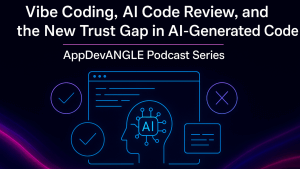In the race to streamline infrastructure and reduce costs, IT leaders are rethinking observability strategies. Consolidation is the name of the game, but without a thoughtful approach, it can compromise visibility, increase mean time to resolution (MTTR), and expose organizations to critical blind spots. Recent findings offer timely guidance for observability leaders facing these challenges.
At theCUBE Research, our analysis supports a growing industry imperative: modern observability strategies must go beyond internal application monitoring and address the internet as a mission-critical delivery layer.
Is Observability Consolidation a Cost-Saver or Risk Multiplier?
According to theCUBE Research:
- 59% of organizations plan to consolidate observability tools by 2025.
- 44% of those who’ve already consolidated report increased MTTR, especially during network-related incidents.
- 72% of IT leaders lack visibility into third-party dependencies like SaaS, CDN, DNS, and ISPs, despite these being sources of most outages.
While consolidation may reduce tool sprawl and licensing costs, it often fails to account for one critical fact: most modern outages occur outside the app stack. Cloud-native APM tools don’t provide visibility into external services, leaving teams reactive instead of proactive.
Introducing Internet Performance Monitoring (IPM)
Internet Performance Monitoring (IPM) is emerging as the essential complement to traditional APM. IPM platforms extend observability across the entire internet delivery chain, providing:
- Real-time synthetic and real-user monitoring (RUM)
- Global telemetry via 3,000+ single-homed agents
- ISP-specific diagnostics and route visibility
- Monitoring of DNS, CDN, BGP, and endpoint performance
This broader view fills the visibility gap left by conventional tools, enabling faster incident resolution and a better understanding of how internet infrastructure affects end-user experiences.
The Cost of Blind Spots from Real-World Examples
The value of IPM is underscored by performance gains across several industries:
- Retail: A global e-commerce brand reduced page load time by 23% and increased customer retention by 11%.
- Financial Services: A major bank identified an ISP latency issue missed by a competing solution, cutting incident response time significantly.
- Streaming Media: A broadcaster avoided a PR crisis by tracing degraded video quality to an upstream DNS timeout.
The common thread is traditional APM-only observability often misses what’s happening across the internet, where performance issues frequently originate.
Why the Internet Layer Matters More Than Ever
According to theCUBE Research:
- 68% of outages in the past year stemmed from non-application layers.
- Only 31% of global organizations have visibility beyond internal environments.
- 91% of enterprises serve customers internationally, but fail to monitor last-mile connectivity conditions.
This external complexity makes IPM a strategic asset. With a global footprint, modular dashboards, and proactive correlation engine, teams can detect and resolve issues before users are impacted.
Recommendations for IT Decision Makers
Based on emerging industry practices and our recent report, here are five strategic actions IT leaders should take:
- Expand Beyond APM: Integrate IPM capabilities to ensure visibility from app to internet.
- Monitor the Real World: Choose platforms with real-user and geographically diverse synthetic testing agents.
- Don’t Trade Visibility for Simplicity: While tool consolidation helps control costs, ensure external performance monitoring remains intact.
- Use Modular, Scalable Tools: Select platforms that support flexible deployment, dashboards, and pricing to grow with your needs.
- Prioritize Predictive Intelligence: Adopt solutions with AI-powered correlation and anomaly detection to preempt incidents.
The Case for Catchpoint
As digital environments become more distributed and internet-dependent, observability strategies must evolve. The evidence shows traditional APM platforms are no longer sufficient on their own.
Catchpoint’s purpose-built IPM solution offers:
- Full-stack internet observability
- Real-time issue detection across ISP and CDN layers
- Industry-leading diagnostics tied to user experience
- A proven track record in reducing outages, response times, and operational costs
Rather than replace APM tools, Catchpoint extends and enhances them by addressing internet blind spots. The platform is particularly differentiated by its Stack Map, which visualizes interdependencies across networks, applications, and services.
| Platform | Focus Area | Coverage & Differentiator |
| Catchpoint | IPM & digital experience | ISP-tied agents, deep visibility into external dependencies |
| ThousandEyes | Network visibility (Cisco) | Network path insights, tied to Cisco infrastructure |
| Dynatrace | APM & infrastructure | AI-powered app monitoring, limited external scope |
| Datadog | Cloud-native observability | Unified logs/metrics/traces, limited internet visibility |
| New Relic | APM & telemetry | Dev-first experience, usage-based pricing, minimal IPM focus |
Next Steps: Read the Full Catchpoint Report
Your organization’s digital resilience depends on the ability to see and respond to performance issues, wherever they happen. Whether you’re overseeing cloud-native transformation, scaling global applications, or tightening operational budgets, the key takeaway is this:
Tool consolidation must not come at the cost of visibility. To learn how to avoid the most critical mistakes in your observability strategy and future-proof your monitoring stack, read the full report, “How to Avoid Critical Mistakes in Observability Strategy.”
By taking this step, IT leaders can equip themselves with the insights and strategies needed to strike the right balance between cost, coverage, and customer experience in a digitally connected world.



